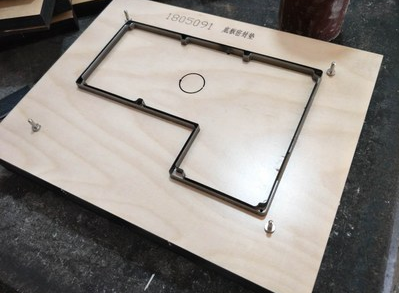

Hotline:0755-22277778
Tel:0755-22277778
Mobile:13826586185(Mr.Duan)
Fax:0755-22277776
E-mail:duanlian@xianjinyuan.cn

Die cutting die is an important die-cutting tool in die-cutting factories, which is a type of mold used for punching and cutting die-cutting products. The die cutter plays a very important role in the die-cutting process, directly affecting the quality and craftsmanship of die-cutting. Let Die Cutting Home take you to learn about the knowledge of die-cutting molds.

Understanding of the knife mold itself
A plastic board is sawed out by a wire saw according to the pattern, and then the blade is inserted with a tolerance of 0.08~0.10mm. This kind of knife mold embedding is a crucial task and requires a lot of effort. This is what we call a plastic plate cutting die. Plastic plate cutting dies are relatively economical and are often used for initial product confirmation when making samples. The cutting technology for both time and offline cutting is quite mature, and the cut boards have high precision and flatness. So someone in the industry invented an iron (aluminum) plate inlay knife, which looks like a plastic plate knife, but has higher precision, more durability, and can be replaced with blades.
A popular type of knife die nowadays is the etching knife die, which has a tolerance of plus or minus 0.05mm, meeting the requirements of this industry standard. The height difference of the knife can be selected according to the properties of the material, and the angle of the blade can also vary from 25 degrees to 55 degrees according to the requirements. It can also achieve the effect of a single blade with an inner slope and an outer straight or inner straight and outer slope. According to the size, the distance between the inner and outer horizontal directions should not be less than 0.7mm, the same knife height should not be less than 0.45mm, and for circular hole sizes below 1mm, you have to find another way. Even if the knife die company breaks this limit, the operation of the knife die made will still be very difficult.
Research and production of knife molds
The research and production of knife molds are based on a deep understanding of customer product demand information and a deep understanding of materials. All the information that the customer wants to express is displayed on the design drawing. Therefore, it is necessary to first check the drawings and convert the customer's requirements into their own process flow. In order to showcase the final product and design the production process, engineering personnel should have a considerable understanding of material knowledge, and another element is to have a good understanding of the company's machine performance.
Factors affecting the cutting die
It is difficult to fill the mold with conductive foam. When designing molds, many people must consider this issue. Although the elasticity of foam is not directly related to its thickness, filling the mold with very thick foam can improve its elasticity. Therefore, sometimes the plastic plate knife is more useful than the etching knife. The thickness of the plastic plate knife is generally 4-6mm, and the blade height is 2-3mm. 3-4mm thick foam can be used. Insert the extra thick foam into the knife mold, be careful not to inflate the size.
The height of the etching knife is usually about 1mm. Foam is usually filled with 1-1.5 millimeters thick. If the foam is too thick, the blade will not be able to cut into the material. Whether it is thin foam or thick foam, it has its sports limit and service life. The first thing to pay attention to is choosing one with good elasticity, and the second is to replace it frequently.

Advanced Institute (Shenzhen) Technology Co., Ltd, © two thousand and twenty-onewww.avanzado.cn. All rights reservedGuangdong ICP No. 2021051947-1 © two thousand and twenty-onewww.xianjinyuan.cn. All rights reservedGuangdong ICP No. 2021051947-2